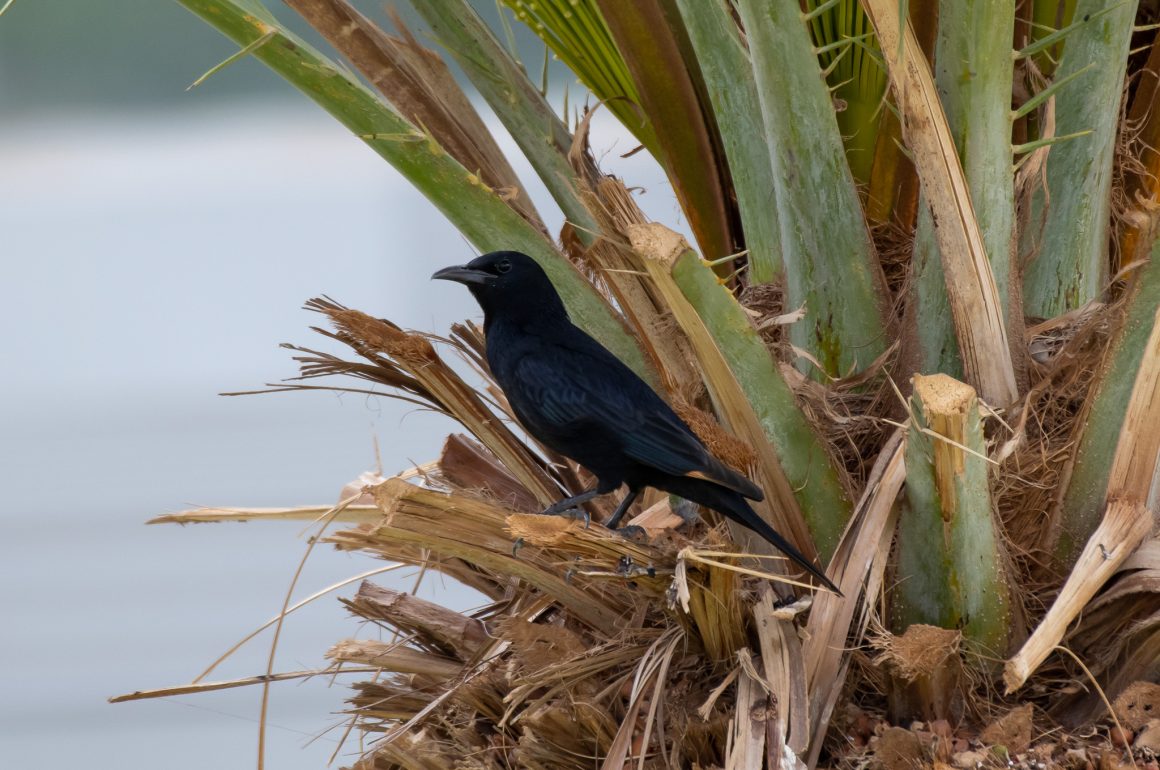
There is a German word, fernweh, which, according to the internet, literally translates to “farsickness,” but it is used to describe the feeling of being homesick for a place you have never been. For me, there are a few places I can think of that I yearn for – although I have never been. One such place was somewhere that I never thought I would ever actually go: Petra.
If you are an Indiana Jones-obsesee, such as me, you may already be aware of Petra. It was featured prominently at the end of Indiana Jones and the Last Crusade. In the movie, the characters explore the ruins of the Treasury building to find the holy grail. Sean Connery’s character calls it “the cup of Christ.” This is thought to be the cup from which Jesus Christ drank during the Last Supper, which was then used to collect Jesus’s blood at the crucifixion. After the cup is found and the bad guy is defeated, Jones and his crew are found outside with horses and on their way home. The Treasury is shown behind them.
So, when we competed in BirdLife Israel’s Champions of the Flyway (COTF) in 2023, I knew I had to take my chance to visit Jordan and Petra. The COTF is based in Eilat, Israel, the southernmost edge of Israel along the Red Sea, a very narrow part in which Jordan and Egypt are only a few miles apart. Several tour operators offer day or overnight trips to Petra and Wadi Rum.
The COTF competition and celebration came and went, and then the morning to explore Jordan was upon us. Our tour guide met the eight of us, including myself, my husband, and a couple of our teammates, at the hotel and quickly noted that we were weighed down with binoculars and cameras. She told us we would not be permitted to bring these items into the country – talk about a gut punch for a bunch of birders! We begrudgingly dragged our gear back to our hotel rooms and returned with our essentials.
A quick bus ride brought us to the border crossing near the International Birding & Research Centre, a fantastic birding site in Eilat. Our guide directed us through the border and told us we would meet our Jordanian guide on the other side. After going through the multi-staged crossing, we reached the other side. We saw the lengthy line of Jordanians waiting to cross into Eilat, likely heading to work for the day in the hustling-and-bustling tourist destination.
We found our guide and hopped on a bus, ready for the long ride to Petra but feeling naked without our binoculars. I was panicking and working through in my head how we would maximize the day without our gear – all those birds just too far away, the pictures we would not be able to take.
The drive from Eilat is about 2 hours long through a mix of rocky, rugged landscapes and small communities in flat, arid areas. It was an uneventful drive-in with glimpses at red-winged Tristram’s Starlings and Common Buzzards. A brief bathroom and convenience store stop atop a mountain overlooking Israel, awarding us a lifer Hooded Wheatear, a striking black-and-white bird with a white crown and belly and black otherwise, playing peek-a-boo with us around a dirt pile.
Before heading down into Wadi Musa, the town nearest Petra, we saw ubiquitous Crested Larks and another lifer – Fan-tailed Ravens, which are hard to miss. Upon arrival at the archeological site, our guide briefed us on the route down through the gorge and then, as it narrows into the Siq, about a 2.5-mile-long hike.
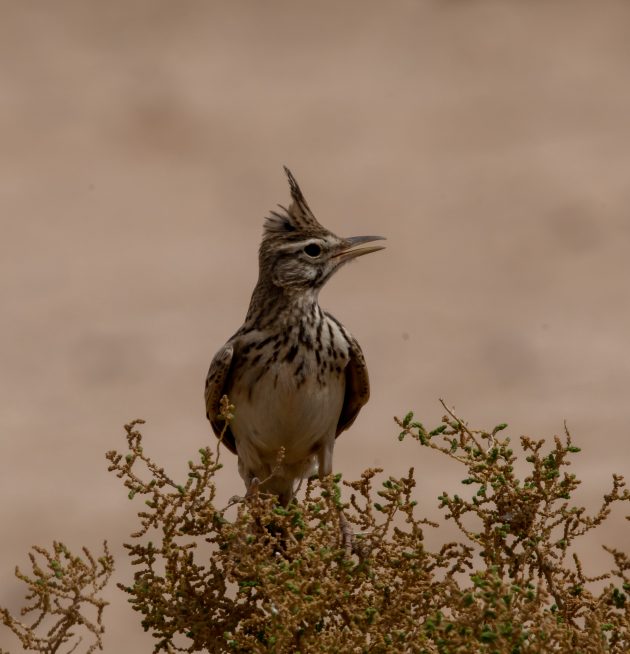
We started down with the many other tourists. Much to the annoyance of our guide, we were lagging behind and not exploring on his well-set timeline. I savored every inch of the site; others in the party listened to the guide’s explanation, and the rest did what they could to see birds. A few small facades, which were small burial niches, were carved into the rock.
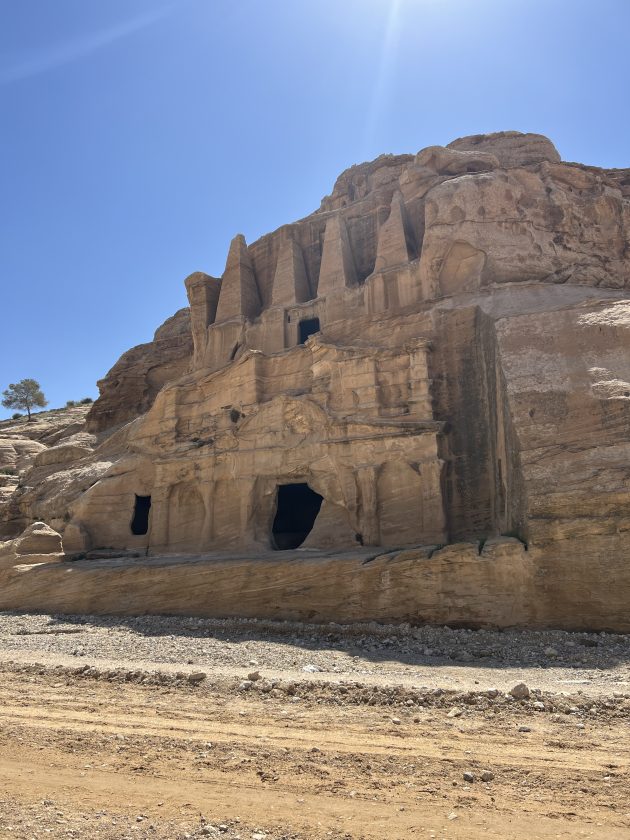
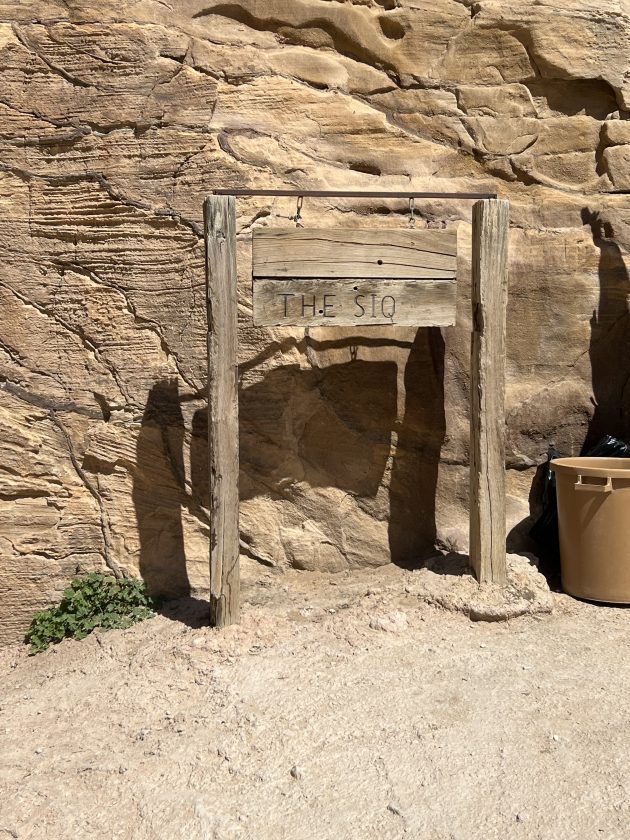
We rounded a curve and then faced the entrance to the Siq, a deep split in the sandstone rocks that narrows to ten feet in some places. Partway in, we noticed a few birds playing around on the rocky outcroppings near the top, which turned out to be Sinai Rosefinches, aptly named as they are small, rosy-colored finches. Lower down, wherever water collected and sunlight reached down, were wildflowers and European Greenfinches taking advantage of the water. Eurasian Crag-Martins and Rock Martins could be seen in the narrow bit of the sky.
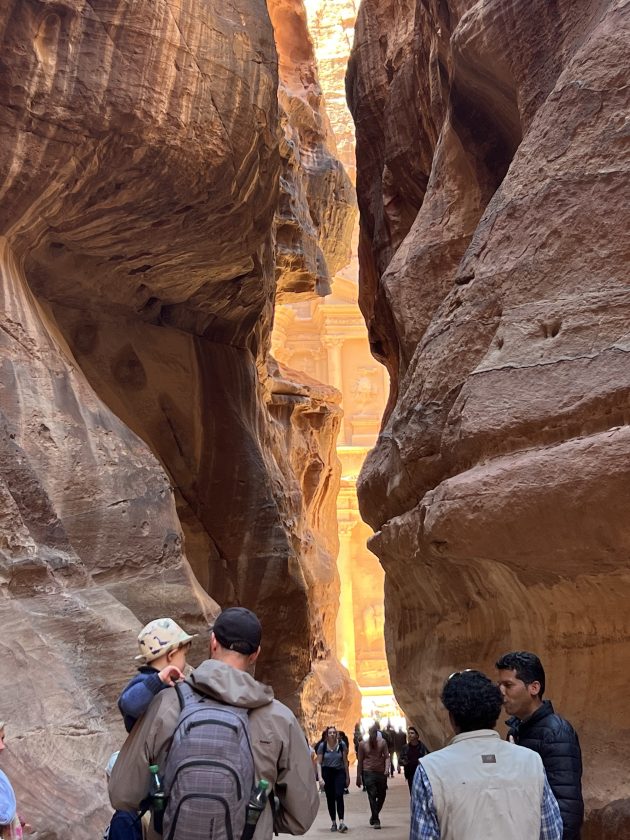
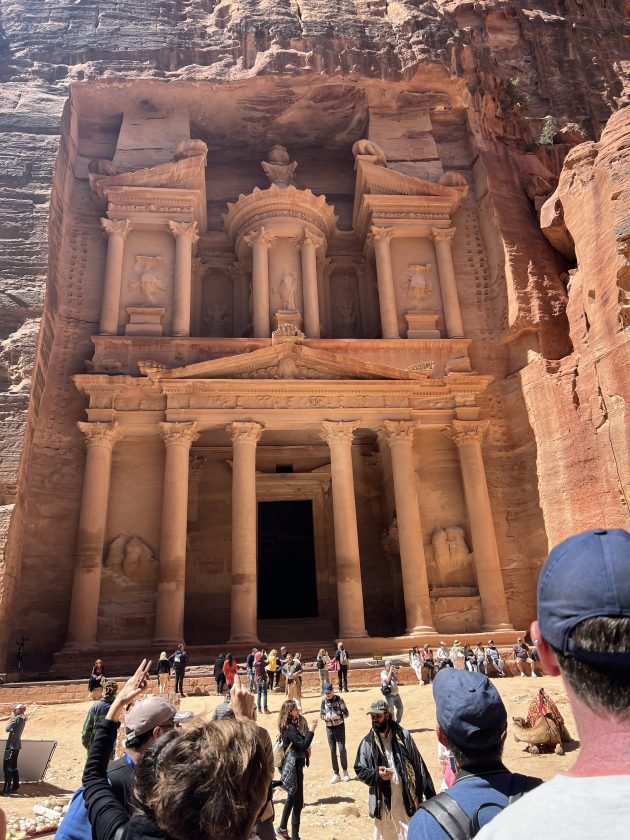
We finally reached the Treasury, the star of Indiana Jones, and a sea of people dropped their jaws at the incredible creation that has stood the test of time. Our guide herded us along the rest of the site, which had so many amazing things to see—it does deserve more than one day to visit.
After a buffet lunch at a restaurant on a cliffside with views of Petra in the distance, we jumped back on the bus and headed to our other stop, Wadi Rum. Also a famous filming location and UNESCO World Heritage Site, Wadi Rum is a river valley cut into the landscape of sandstone and granite rocks. We jumped into the back of pick-up trucks and were taken to a few stops nearby to see the views from a dune, a Bedouin campsite, petroglyphs, and the Seven Pillars of Wisdom. It was late afternoon, so few birds were seen beside Tristram’s Starlings and Eurasian Crag-Martins.
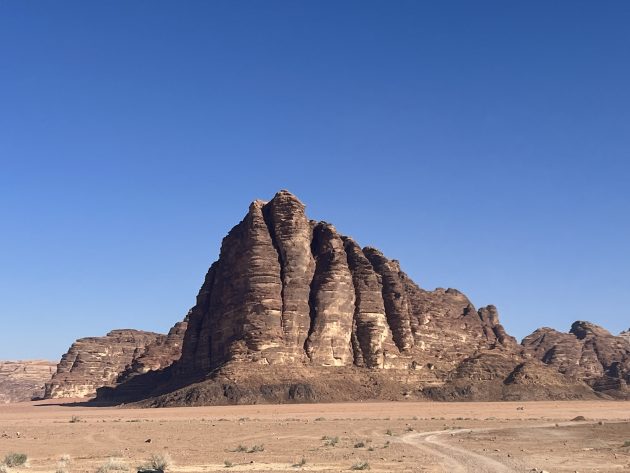
It was a magical day exploring some truly incredible historical sites. It was definitely a challenge not to have our optics, as we wish we could have had closer looks at the lifer birds and some distant sites. As these locations are desert areas, birds are sparser but still worth the effort! Make sure to check the regulations before you go! Hopefully you are not deterred by the challenges to birding, because it is a site I would not have missed for the world!











Petra is indeed magical!
Wow – what a blow to visit Petra without binoculars or cameras. I was lucky enough to visit Petra rather more than 20 years ago, where (I hate to admit) our primary target was the Sinai Rosefinch, not the Treasury building. I had my binoculars with me, and did eventually find the Rosefinch. Ironically, the members of my group more interested in archaeology than birds managed to see the Rosefinch before I did. Petra is a spectacular site to look for birds.
Wadi Rum I remember best for the fantastic desert scenery, and seeing a pair of Verreaux’s Eagles soaring over the cliffs. These handsome eagles are extremely rare in the Western Palearctic , and this is just about the only place to see them. They are much easier to find in Kenya, or Namibia.
Your experience was not unique; I was detained for half an hour at Jordan’s Amman airport in 2022 because of my binoculars. Oddly enough, they had no problem with my camera and its enormous 150-600 mm lens. They did eventually let me into the country. On my way out, they insisted that those oh-so-dangerous binoculars had to be packed into my checked suitcase, instead of going in my carry-on.
We may be going back this fall, as part of another multi-country trip, and I have no idea yet what I will do with my optics. I’m certainly not going to leave them at home here in Mexico!
Yikes! We have been questioned about our DSLR and scopes before at other airports, but never our binos.
With all formal requests/demands at any border the recipe that always works is: smile, ask for the purpose of the demand and insinuate the enormous amount of extra work resulting from this (frivolous) demand and how you are so willing to help reduce such workload of the poor civil servant in front of you.